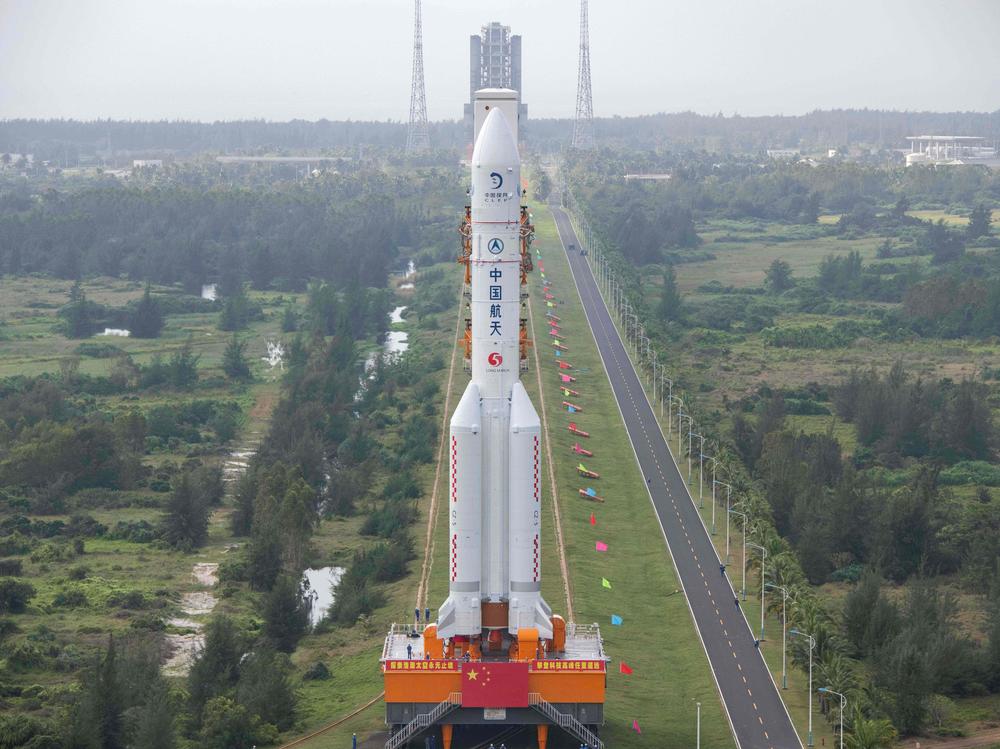Section Branding
Header Content
China Moon Mission Will Try To Bring Back The First Lunar Rocks In Decades
Primary Content
China is planning to launch an uncrewed spacecraft to the moon on Tuesday, which will shovel up lunar rocks and soil and bring them back to Earth. If successful, it would be the first time any country has retrieved samples from the moon in more than 40 years.
The mission, called Chang'e-5, is part of a series of complex trips to the moon by the China National Space Administration (CNSA). In January 2019, China landed a spacecraft on the far side of the moon — something that had never been done before. If successful, China will be only the third country ever to have retrieved samples from the moon, following the United States and the Soviet Union in the 1960s and 1970s.
The spacecraft is expected to launch from Wenchang Space Launch Center on Hainan Island, China, early Tuesday local time, which will be about 3:25 p.m. ET on Monday, according to Space Launch Now, a site that tracks rocket launches around the world.
It will collect about 4 pounds of surface material from a previously unexplored region, over the course of one lunar day — equivalent to around 14 Earth days — which will keep the electronics from potentially damaging in the extreme overnight cold temperatures, according to the science journal Nature. The samples will mostly be stored at the Chinese Academy of Sciences National Astronomical Observatory of China in Beijing. It's not clear whether the samples will leave the country for outside research.
The samples are important because they could help scientists understand volcanic activity on the moon, and when volcanoes were last active. The lunar rocks and soil could confirm that volcanoes were active billions of years more recently than previously thought. If that's true, "we will rewrite the history of the moon," Xiao Long, a planetary geologist at the China University of Geosciences in Wuhan, told Nature.
The sample will be returned to Earth, parachuting into the Siziwang Banner grassland of the autonomous region of Inner Mongolia in China probably sometime in early December, says NASA.
Copyright 2020 NPR. To see more, visit https://www.npr.org.

